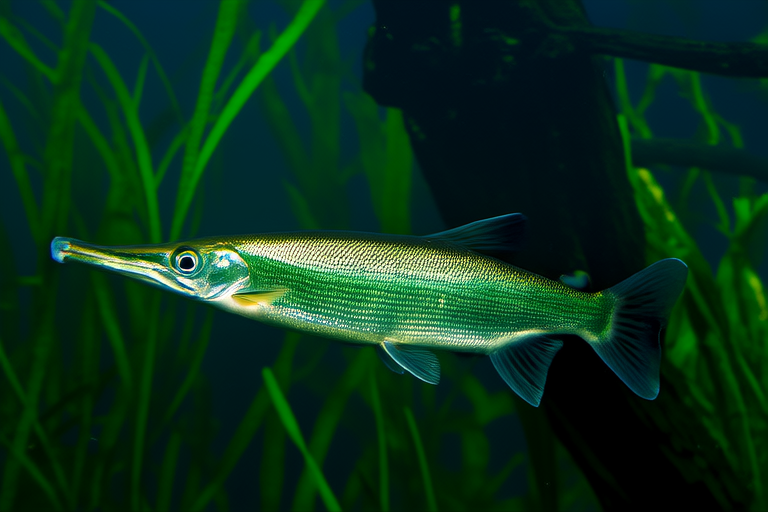Arowana Fish: From Amazon Basin to Aquariums
The arowana is a fascinating species of freshwater fish that has captured the imagination of aquarists worldwide. These majestic creatures have a rich history, steeped in myth and tradition, and are known for their striking appearance and unique behaviors. This article delves into the origins of arowana fish, exploring their journey from the Amazon basin to becoming popular aquarium pets. It also examines their habitat, care requirements, dietary needs, and breeding practices, offering valuable insights for both novice and experienced aquarists.
Historical Significance and Myths
Arowana fish hold significant cultural importance in many parts of Asia, particularly in Malaysia, Singapore, and Indonesia. They are believed to bring good luck and prosperity to their owners. In Chinese culture, the arowana is considered a symbol of wealth and success, often referred to as the ‘Dragon of the Water.’ This reputation has contributed to the popularity of arowana fish among collectors and enthusiasts.
The arowana’s association with dragons stems from its elongated body and pectoral fins, which resemble dragon wings. Some myths suggest that arowana can predict financial success or even protect homes from evil spirits. These beliefs have made arowana fish highly sought after, driving demand and influencing their market value.
Habitat and Adaptation
Native to tropical regions, arowana fish inhabit slow-moving rivers, floodplains, and swamps. They are found in countries such as Brazil, Indonesia, Malaysia, and Thailand. Arowana fish are highly adaptable and can thrive in various aquatic environments, including brackish water. Their ability to survive in diverse habitats has allowed them to colonize different parts of the world.
Arowana fish possess an air bladder, enabling them to breathe atmospheric oxygen, which aids in their survival in low-oxygen environments. This adaptation allows them to navigate through areas with poor water quality, making them resilient in challenging conditions. However, it is essential to replicate their natural habitat as closely as possible when keeping arowana fish in captivity.
Dietary Needs
Arowana fish are carnivorous and require a varied diet to maintain optimal health. In the wild, they feed on insects, small fish, crustaceans, and other aquatic organisms. When kept in aquariums, it is crucial to provide a balanced diet that includes high-quality pellets, frozen or live foods like bloodworms, brine shrimp, and feeder fish.
Feeding habits may vary depending on the species of arowana. For instance, Asian arowana prefer larger prey items, while African arowana tend to consume smaller food sources. It is important to research the specific dietary requirements of your chosen species to ensure proper nutrition and growth.
Breeding Practices
Breeding arowana fish can be challenging due to their complex reproductive behavior. Males typically guard the eggs and young fry until they are large enough to fend for themselves. In captivity, breeding arowana requires careful planning and attention to detail.
Creating a suitable breeding environment involves providing ample space, ensuring water quality, and mimicking natural conditions. Many breeders use hormone treatments to induce spawning, although this method is controversial and not recommended for novice aquarists. Instead, focusing on improving water parameters, temperature, and providing adequate nutrition can encourage natural reproduction.
Care Requirements
Maintaining a healthy tank ecosystem is crucial for the well-being of arowana fish. A spacious aquarium with ample swimming room is necessary, as arowana are active swimmers. The tank should be equipped with robust filtration systems and heaters to maintain stable water conditions.
Water quality is paramount for arowana health. Regular water changes, monitoring pH levels, and ensuring proper oxygenation are essential. Additionally, incorporating live plants and driftwood can enhance the tank’s aesthetic appeal while providing hiding spots and reducing stress.
Different Species of Arowana
Several species of arowana exist, each with distinct features and behaviors. The most common species include the Asian arowana (Scleropages formosus), African arowana (Heterotis niloticus), and silver arowana (Osteoglossum bicirrhosum).
- Asian Arowana: Known for its vibrant colors and elongated body, the Asian arowana is highly prized for its beauty and rarity. It can grow up to 3 feet in length and is native to Southeast Asia.
- African Arowana: Smaller than its Asian counterpart, the African arowana reaches approximately 24 inches in length. It is characterized by its dark coloration and robust build.
- Silver Arowana: The silver arowana is easily recognizable by its shimmering scales and long dorsal fin. It can grow up to 4 feet in length and is native to South America.
Tips for Novice Aquarists
If you’re new to keeping arowana fish, start by researching the specific species you’re interested in. Understanding their dietary needs, habitat preferences, and behavioral patterns will help you create an ideal environment for your fish.
Invest in high-quality equipment, such as powerful filters, heaters, and efficient lighting systems. Regular maintenance, including water changes and cleaning, is essential for maintaining a healthy tank ecosystem. Patience is key when introducing arowana fish to your aquarium, as they may take time to acclimate to their new surroundings.
Tips for Experienced Aquarists
Experienced aquarists may consider breeding arowana fish or experimenting with different tank setups. Advanced techniques, such as hormone treatments or specialized feeding regimens, can be explored to enhance reproductive success and promote optimal growth.
Continuing education and staying updated on the latest research and developments in arowana care can further refine your skills and knowledge. Engaging with online communities and attending workshops or seminars can provide valuable insights and networking opportunities.
Conclusion
Arowana fish are captivating creatures with a rich history and cultural significance. Their journey from the Amazon basin to becoming popular aquarium pets highlights their adaptability and resilience. By understanding their unique characteristics, habitat, and care requirements, aquarists can successfully keep these magnificent fish in captivity.
Whether you’re a novice or experienced aquarist, taking the time to learn about arowana fish will enhance your enjoyment and appreciation of these enigmatic creatures. With proper care and attention, arowana fish can thrive in your aquarium, bringing joy and wonder to your aquatic world.
